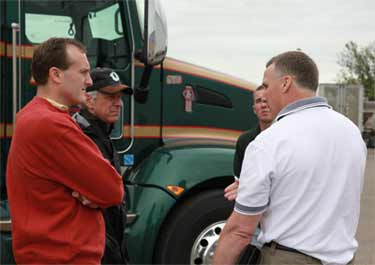Can a Passenger and a Driver Sue for Injuries Sustained in a Rollover?
If you suffered a head injury from a rollover accident, you may have the right to sue for compensation if you were a passenger in the car or you were the driver and one of the following applies:
- You were hit by another vehicle whose driver was at fault;
- Your vehicle had a defective part
- Your vehicle was negligently serviced prior to the crash;
- A road hazard, such as debris in the road, caused the accident.
Our lawyers have won multi-million-dollar settlements and verdicts for clients who suffered permanent brain damage and other serious injuries. Contact our law firm for a free consultation.

Head Injury Factors and How They Affect a Lawsuit
The following factors affect the occurrence and severity of a head injury in a rollover accident:
- Seat belt use – Not wearing a seat belt increases the risk of sustaining a serious head injury during a rollover accident. An unrestrained occupant can be thrown violently against the vehicle or be ejected from the vehicle. Legally, the person who was not wearing a seat belt may be considered partially at fault for the severity of the injuries. This would affect the amount of money obtained in a settlement or trial.
- Headroom – Headroom reduction increases the risk of sustaining a serious head injury during a rollover accident. If your lawyer can prove that this was a design defect, you may be able to sue the manufacturer under product liability laws.
- Roof strength – A strong roof on a vehicle reduces the risk of sustaining any injuries, including head injuries, in a rollover accident. A weak roof can give rise to a product liability claim against an auto maker and supplier. These can be multi-million-dollar cases. In many of these cases, there is brain damage and cervical spine injury, including a broken neck.
About one third of all reported rollovers cause traumatic brain injury.
Concussions and Skull Fractures
Rollover accident head injuries often involve concussions and skull fractures:
- Concussion is the most common type of traumatic brain injury (TBI). A concussion is a short loss of awareness or consciousness in response to a head injury. The injured person may not black out but may merely feel dazed. Most concussions are mild, but some can have serious, lasting side effects.
- Skull fractures occur when the bone of the skull cracks or breaks. For the skull to fracture, the blow to the head has to be severe and is more likely to happen to someone in an accident who was not wearing his or her seatbelt. There are a number of different skull fractures:
- A simple fracture is a break in the bone without damage to the skin.
- A linear skull fracture is a break in a cranial bone resembling a thin line, without splintering, depression, or distortion of bone.
- A depressed skull fracture is a break in a cranial bone (or “crushed” portion of skull) with depression of the bone in toward the brain.
- A penetrating skull fracture occurs when something pierces the skull, such as a bullet, leaving a distinct and localized injury to brain tissue.
- A compound fracture involves a break in, or loss of skin and splintering of the bone.
Reference: Eigen, Ana Maria, “Examination of rollover crash mechanisms and occupant outcomes,” Traffic Safety Facts, a publication of the National Center for Statistics & Analysis. http://www-nrd.nhtsa.dot.gov/Pubs/809-692.PDF